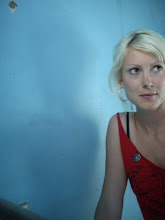I was really unwell this week and unable to attend class.
Instead i have researched the artists that were talked about in class and wrote some notes on them.
Richard Misrach
American photographer who helped pioneer the renaissance of colour photography and large scale (8x10 camera) presentaions in the 1970's. Best known for his ongoing series 'Desert Cantos', which he studies the landscape and mans complex relationship to it. Canto means section of a large poem and each canto of his series is named for the aria shown and numbered in sequence. The first 10 cantos are: The Terrain, The Event, The Flood, The Fires, The War, The Pit, Desert Seas, The Event II, Project W-47, The Test Site. The 'nuclear landscapes' he shot in the nevada desert sees him experimenting with photographing plants, water and the nocturnal environment of the American West. Typically his pictures are in a large format and the colours are slightly muted, which emphasises the scale and desolation of the landscape. He spent many solitary days in a van, waiting for something to happen.
Some other works:
Cancer Alley
Golden Gate, On the beach
Bravo 20 National Park
White Man Contemplating Pyramids, Egypt.
Richard Avedon
"Every Photograph is accurate. None of them is the truth." - Richard Avedon
American Photographer who capitalised on his early success with fashion photography (Harpers Bazaar, Vogue and Life) to then pursue fine art. In 1946 he became chief photographer at Harpers Bazaar where he did not conform to the standard techniques of fashion photography, where models stood emotionless and indifferent. Instead he showed full emotion, smiling, laughing and many times, in action. He branched out from from fashion subjects and also photographing patients at mental hospitals, the Civil Rights Movement in 1963, protesters of the Vietnam War and later the fall of the Berlin Wall. He photographed The Beatles in 1967, his first major rock poster series.
He was inspired in the way portraiture captures the personality and soul of his subjects. With fame, he brought many famous faces to his studio and photographed them with a large-format 8x10 view camera. These took a minimalist style, where the person looked squarely at the camera in front of a white background. He would reveal the subjects personality or characteristics by asking psychologically probing questions or guiding them into uncomfortable areas.
His large prints measure 3 feet high. Some large format portrait work he shot of drifters, miners and cowboys.
He became the first staff photographer for The New Yorker in 1992.
Gregory Crewdson
American photographer best known for his elaborately staged, surreal scenes of American homes and neighbourhoods, 'Twilight'. He looks for places that are both familiar and strange, a peculiar combination of anywhere and nowhere. Once he finds a spots to photograph, he assesses the area and defines exactly what he wants, months later the camera and crew will arrive and shoot the scene using a 8x10mm camera. He explains how he lives for that moment at twilight, that 20min period where the mood is still and magical. This period is the only time of day that his cameras can capture the images in complete detail, otherwise the light interferes. Another reason for photographing at this time is for the metaphorical notion of inhabiting an in-between space (before and after). It has a transformational quality. It evokes a familiar and sad sense of something domestic yet empty and worn.
Andreas Gursky
German Visual artist known for his enormous architecture and landscape colour photography.
After the 1990's he has relied on computers to edit and enhance his pictures, enhancing the space in his subjects photographed. His work is described as vast, splashy, entertaining and literally unbelievable (Peter Schjeldahl, New Yorker). Gurksys photographs are large, anonymous, man-made spaces, panoramic colour prints, some six feet high by 10 foot long and described to have 'the presence, the formal power, and in several cases the majestic aura of 19th century landscape paintings' (Calvin Tompkins). Examples are high-rise facades at night, office lobbies, stock exchanges, the interiors of big box retailers.
Jan Groover
American photographer residing in France, known for her use of emerging colour technologies. She uses a variety of camera formats to affect perception and plane. She creates complex, abstract spatial arrangements in her still-life portraits and landscape photography. She references art history in her photographs (Renaissance perspectives and Cezanne's tabletops).












No comments:
Post a Comment